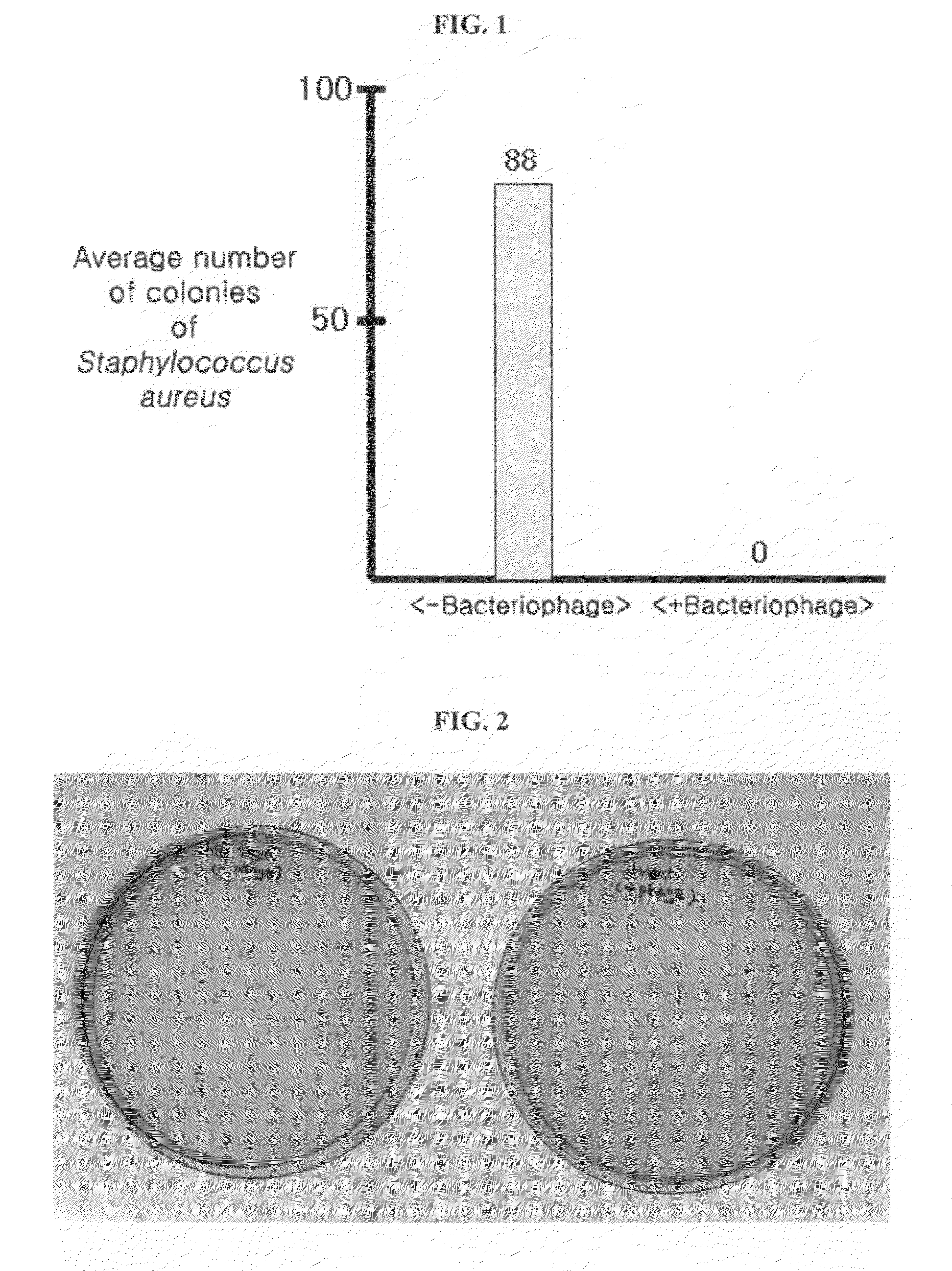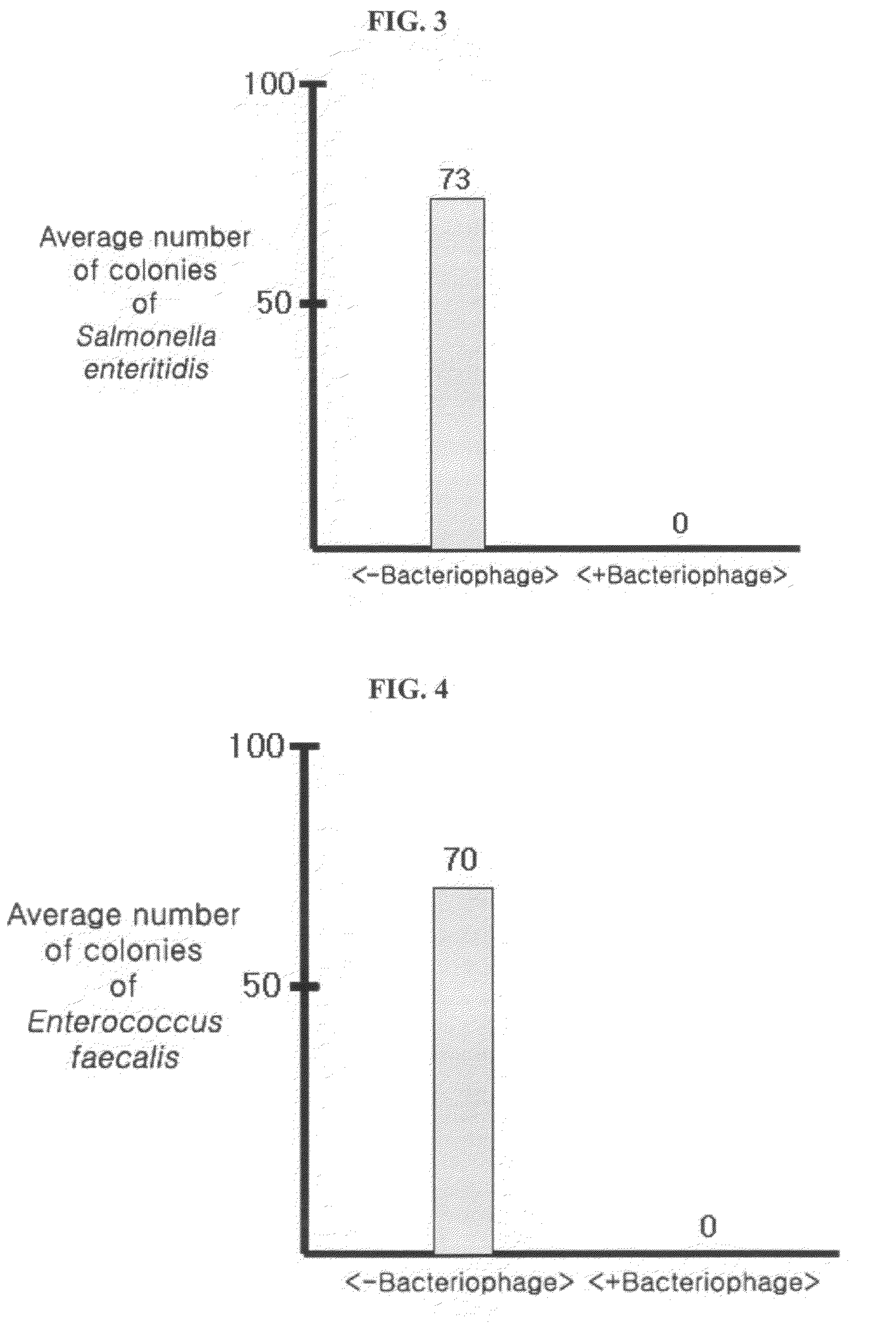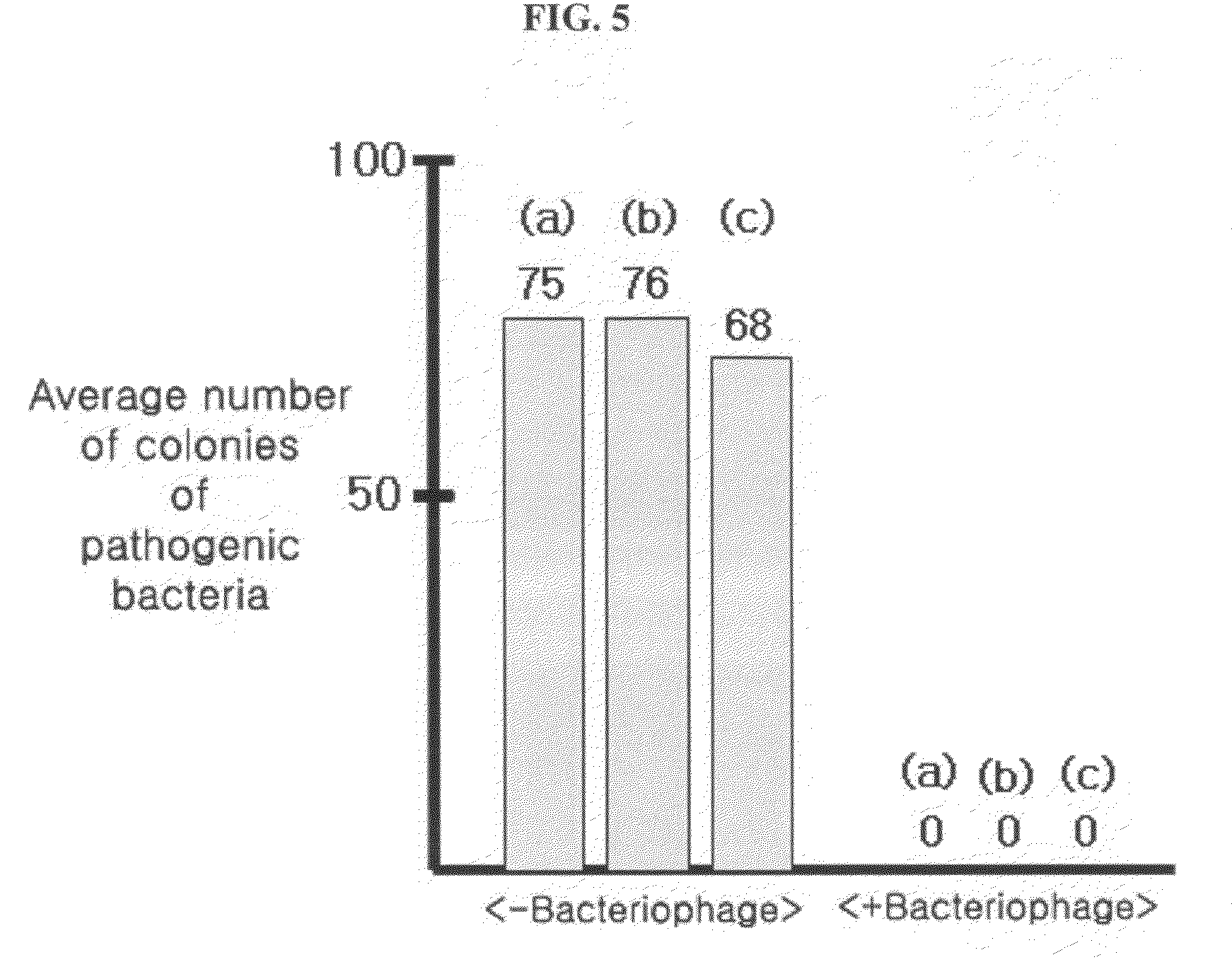Composition for the treatment of ballast water containing bacteriophage as an effective component and biological method with the same for removing bacteria present in ballast water
a technology of ballast water and bacteriophage, which is applied in the direction of antibacterial agents, biocide, separation processes, etc., can solve the problems of inefficiency and even destruction of marine ecosystems, public health threats, and inability to replace ballast water with clean open-ocean water. the effect of inefficiency and not preferred
- Summary
- Abstract
- Description
- Claims
- Application Information
AI Technical Summary
Problems solved by technology
Method used
Image
Examples
example 1
Preparation of Compositions Containing Different Bacteriophages as Active Ingedients
[0060]The present inventors prepared the composition #1 applicable for Staphylococcus aureus using bacteriophage SAP-1 (Accession No: KCTC 11153BP) isolated previously by the present inventors. The present inventors also prepared the composition #2 applicable for Salmonella enteritidis using bacteriophage SEP-1 (Accession No: KCTC 11173BP) isolated previously by the present inventors. The present inventors also prepared the composition #3 applicable for Enterococcus faecalis by using bacteriophage EFA-1 (Accession No: KCTC 11289BP) isolated previously by the present inventors.
[0061]Particularly, to prepare SAP-1 bacteriophage suspension, Staphylococcus aureus was inoculated into 10 ml of TSB (Tryptic Soy Broth) medium (casein digest, 17 g / L; soybean digest, 3 g / L; dextrose, 2.5 g / L; NaCl, 5 g / L; dipotassium phosphate, 2.5 g / L), followed by shaking culture at 37° C. for overnight. Next day, 500 μl of ...
example 2
Treatment of Ballast Water with the Compositions of the Present Invention Application of Composition #1 Prepared by Using Staphylococcus aureus-Specific Bacteriophage SAP-1
[0065]Ballast water was taken from 5 ships, by 100 ml per each ship. 30 ml of each ballast water sample was poured in each sterilized Erlenmeyer flask in a clean bench. The flask was sealed with a sterilized lid. 2 samples per each ship, total 10 samples were prepared. One of the two samples from each ship was treated with nothing and just left at room temperature. The other sample was treated by adding 10 μl of the composition #1 which had been 107 fold diluted with water, and then left at room temperature with the mouth of the flask closed. After one day, 1 ml of each was taken, which was spread on Baird-Parker agar medium, the Staphylococcus aureus selection medium, followed by culture in a 37° C. incubator for overnight. On the next day, the number of colonies formed on the solid medium was counted.
[0066]As a...
PUM
 Login to View More
Login to View More Abstract
Description
Claims
Application Information
 Login to View More
Login to View More - R&D
- Intellectual Property
- Life Sciences
- Materials
- Tech Scout
- Unparalleled Data Quality
- Higher Quality Content
- 60% Fewer Hallucinations
Browse by: Latest US Patents, China's latest patents, Technical Efficacy Thesaurus, Application Domain, Technology Topic, Popular Technical Reports.
© 2025 PatSnap. All rights reserved.Legal|Privacy policy|Modern Slavery Act Transparency Statement|Sitemap|About US| Contact US: help@patsnap.com



